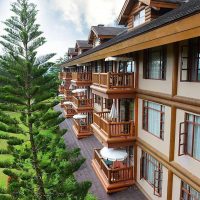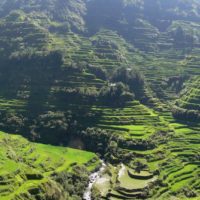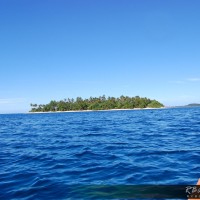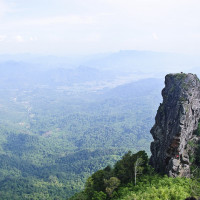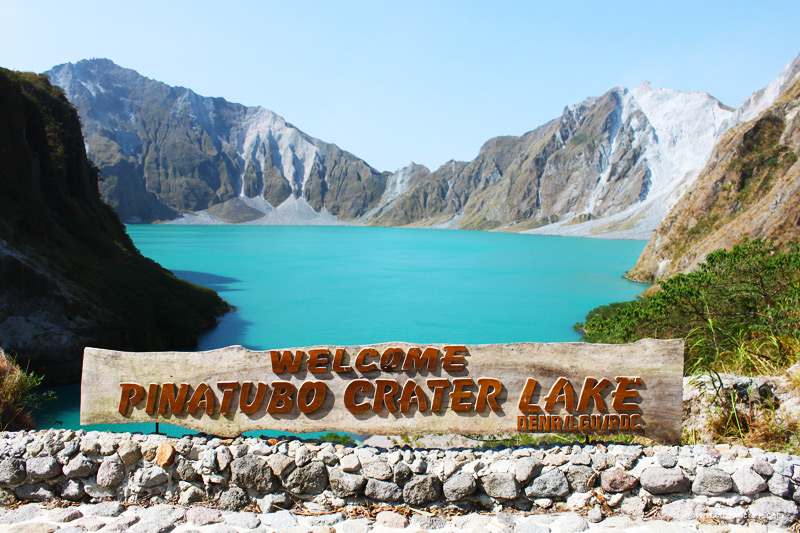
The climactic eruption that rocked Mt. Pinatubo in Zambales on June 15, 1991, the effects of which reached neighboring countries, has allowed the birth of a new tourist destination out of the barely known and active volcano in the Philippines. With the traces of eruption still aplenty, Mt. Pinatubo and its surrounding areas has become an interesting mix of eruption signs and the new developments that transformed the place over the years.
While said catastrophic event has affected 364 communities, displaced 2.1 million people, damaged or wiped out sources livelihoods, destroyed and damaged 8,000 and 73,000 houses, respectively and an estimated 86,000 hectare farmland covered with “lahar” or volcanic ash, Mt. Pinatubo gave something back to the people and the community that were affected by devastating effects. Today, the “lahar” laden lands of Crow Valley, the beautiful waters of Lake Pinatubo or Crater Lake or even the grand-looking canyon walls of ash and rocks, the fantastic boulders and rock formations are just some of the breathtaking views one can enjoy during a trip to Mt. Pinatubo.
 Described by Wikipedia as an active stratovolcano, Mt. Pinatubo is located near the tripoint of the Philippine provinces of Zambales, Tarlac and Pampanga and about 4 km west of the dormant Mt. Arayat in Pampanga and 87 km northwest of Manila. Local and foreign tourists are lured to the place due to the fun and exciting extreme adventure experience one is bound to have when they visit Mt. Pinatubo. Imagine being sandwiched by car-sized boulders, sharp rocks and unique formations as you find your way through the rugged terrain to reach the volcano peak. The unique rock formations which resulted from the earth-changing eruptions of Mt. Pinatubo are just some of the great views one will be privilege to see on a day tour to Mt. Pinatubo.
Described by Wikipedia as an active stratovolcano, Mt. Pinatubo is located near the tripoint of the Philippine provinces of Zambales, Tarlac and Pampanga and about 4 km west of the dormant Mt. Arayat in Pampanga and 87 km northwest of Manila. Local and foreign tourists are lured to the place due to the fun and exciting extreme adventure experience one is bound to have when they visit Mt. Pinatubo. Imagine being sandwiched by car-sized boulders, sharp rocks and unique formations as you find your way through the rugged terrain to reach the volcano peak. The unique rock formations which resulted from the earth-changing eruptions of Mt. Pinatubo are just some of the great views one will be privilege to see on a day tour to Mt. Pinatubo.
For the more adventurous at heart, an off-road challenge where one can take on a wild, bumpy ride in old four-wheel drive jeeps in a safari-like journey across the ash fields and the dusty expanse of the valley to a campsite has to be endured before the trek begins. This adventure will take guests to see the lahar canyons, the Gate of Heaven and the other sites in Mt. Pinatubo.
Highly recommended for hikers is the 2 and a half hour (minimum) challenging trek along the rugged terrain, between huge rocks and boulders, leading to the top where the view offered by the Crater Lake is just spectacular. Hiking up towards the summit passing through sandy cliffs and up a mountain path is one for the physically fit as one will have to balance on and between the sharp rocks, and the generally rough terrain and rocky ground will test your strength and stamina. On the hike way back, you will have the opportunity to visit an Aeta Village and enjoy the unique experience of interacting with one of the oldest indigenous tribes in the Philippines.
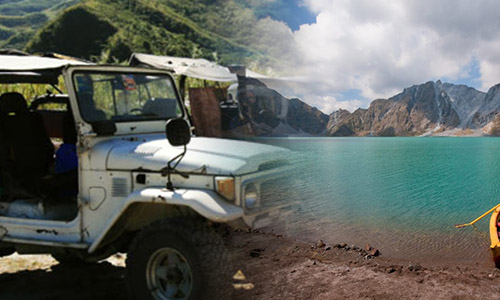 A dip at the Lake Pinatubo can be the highlight of your Mt. Pinatubo trip. Described as a wide jewel of blue and green, it is now a famous bush walking spot, loved by adventure seekers and high spirited mountaineers and hikers. Visitors can take a dip at the volcano’s vast crater lake where the view itself is truly breathtaking.
A dip at the Lake Pinatubo can be the highlight of your Mt. Pinatubo trip. Described as a wide jewel of blue and green, it is now a famous bush walking spot, loved by adventure seekers and high spirited mountaineers and hikers. Visitors can take a dip at the volcano’s vast crater lake where the view itself is truly breathtaking.
And for those who wish to relax a bit and replenish their strength after a day’s trip to the crater, a spa treatment is available at the Pinatubo spa town. Available services are massage, volcanic ash spa, or a dip to the mud pool. This is one of the attractions that travelers are excited about, the one-of-a-kind treatment they could get from the volcano’s ashes.
Mt. Pinatubo day-long adventure is just one of the aplenty travel destinations and attractions in the Philippines particularly in Zambales. For those who do not intend to go far from the country’s capital, Manila, a trip to Zambales is one of the best options. Traveling to the Philippines is made easier and happier with its people’s warm welcome and accommodating characteristics to both local and foreign tourists.


